Ultrafast & Terahertz Photonics Group
|
Ultrafast optical techniques provide powerful probes of different states of matter, using light pulses that have femtosecond duration. In Warwick our activities span a number of areas:
|
Group facilitiesThe Group has labs across the campus, in the main Physics building, Materials and Analytical Sciences, and Millburn House. Read more about our experimental capabilities in terahertz science and technology. We also run the Warwick Centre for Ultrafast Spectroscopy Research Technology Platform. 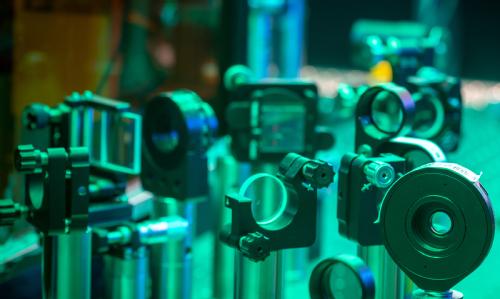
We make use of a wide range of Warwick's excellent materials analysis equipment, including X-ray diffraction, Raman spectroscopy, electron microscopy and magnetometry. |
Join the group!Please get in touch if you are interested in a PhD or MSc by Research in the group. We have two funded PhD projects available for 2024 start: with Dr Adam Wright on polaritons in perovskite solar cell materialsLink opens in a new window, and Prof. Emma MacPherson on THz robotic probes of skin cancerLink opens in a new window. 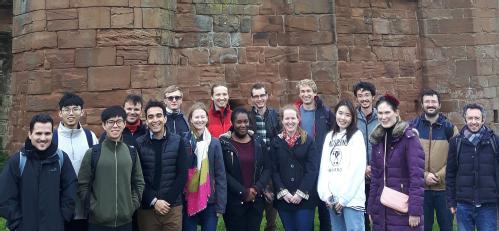
Group, Theses & PhotosContact details for our current group members and our photo gallery. For recent theses from the group, please see here. |
Research areas
Nanomaterials
We use pump/probe spectroscopy to study how light and matter interact on femtosecond to nanosecond timescales. Using visible probes we can track electronic processes, while infrared radiation lets us study vibrational states of molecules and atomic-scale defects in semiconductors.
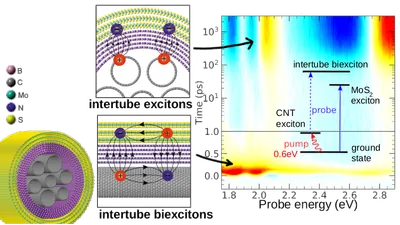
Recent papers:
The 3237 cm−1 diamond defect: Ultrafast vibrational dynamics, concentration calibration, and relationship to the N3VH0 defect
High-bandwidth perovskite photonic sources on silicon
Terahertz medical imaging
Performing in vivo studies of the THz properties of skin is a major initiative in the group, supported by the EPSRC Terabotics Programme GrantLink opens in a new window. We develop robust measurement protocols and test them on a statistically significant number of patients, cross-checking with other methods.
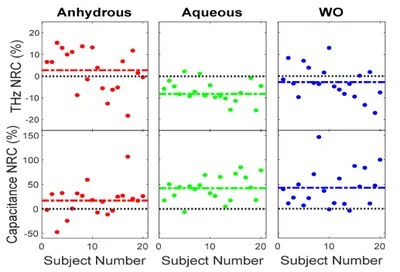
Recent papers:
Terahertz probe for real time in vivo skin hydration evaluation
Spectroscopic insight on impact of environment on natural photoprotectants
The 2023 terahertz science and technology roadmap
Semiconductors and Energy materials
A major strand of our research is to improve our knowledge of the fundamental science underpinning new semiconductor materials, such as metal-halide perovskites, which are often attractive for photovoltaic applications.
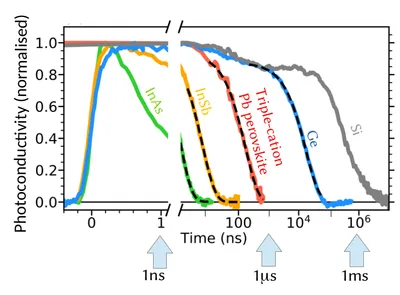
Recent papers:
Terahertz Emission via Optical Rectification in a Metal-Free Perovskite Crystal
High-bandwidth perovskite photonic sources on silicon
Resolving the Ultrafast Charge Carrier Dynamics of 2D and 3D Domains within a Mixed 2D/3D Lead-Tin Perovskite
Terahertz components, methods and techniques
We develop new THz devices and integrate them into novel systems designs that can perform THz imaging and THz spectroscopy faster, and with increased capabilities (e.g. polarisation control; robot-controlled probes).
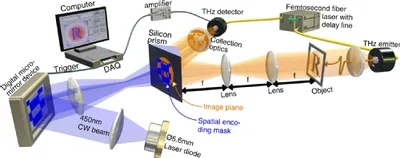
Recent papers:
Simultaneous measurement of orthogonal terahertz fields via an emission multiplexing scheme
Optimum Optical Designs for Diffraction-Limited Terahertz Spectroscopy and Imaging Systems Using Off-Axis Parabolic Mirrors
The 2023 terahertz science and technology roadmap
Recent publication highlights [filter by topic: view all | highlights | THz | perovskites | nano | biomedical]
Landau polaritons in highly nonparabolic two-dimensional gases in the ultrastrong coupling regime
J. Keller, G. Scalari, F. Appugliese, S. Rajabali, M. Beck, J. Haase, C.A. Lehner, W. Wegscheider, M. Failla, M. Myronov, D.R. Leadley, J. Lloyd-Hughes, P. Nataf, and J. Faist
Physical Review B 101:075301 (Feb 2020) [ pdf ][ ref ]
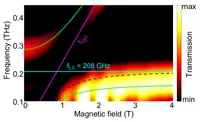 We probe ultrastrong light-matter coupling between metallic terahertz metasurfaces and Landau-level transitions in high-mobility two-dimensional electron and hole gases. We utilize heavy-hole cyclotron resonances in strained Ge and electron cyclotron resonances in InSb quantum wells, both within highly nonparabolic bands, and compare our results to well-known parabolic AlGaAs/GaAs quantum well systems. Tuning the coupling strength of the system by two methods, lithographically and by optical pumping, we observe a behavior clearly deviating from the standard Hopfield model previously verified in cavity quantum electrodynamics: an opening of a lower polaritonic gap.
We probe ultrastrong light-matter coupling between metallic terahertz metasurfaces and Landau-level transitions in high-mobility two-dimensional electron and hole gases. We utilize heavy-hole cyclotron resonances in strained Ge and electron cyclotron resonances in InSb quantum wells, both within highly nonparabolic bands, and compare our results to well-known parabolic AlGaAs/GaAs quantum well systems. Tuning the coupling strength of the system by two methods, lithographically and by optical pumping, we observe a behavior clearly deviating from the standard Hopfield model previously verified in cavity quantum electrodynamics: an opening of a lower polaritonic gap.
Approaching the Shockley-Queisser limit for fill factors in lead–tin mixed perovskite photovoltaics
K.D.G.I. Jayawardena, R.M.I. Bandara, M. Monti, E. Butler-Caddle, T. Pichler, H. Shiozawa, Z. Wang, S. Jenatsch, S.J. Hinder, M.G. Masteghin, M. Patel, H.M. Thirimanne, W. Zhang, R.A. Sporea, J. Lloyd-Hughes and S. R. P. Silva
J. Mater. Chem. A 8 693 (Jan 2020) [ pdf ] [ ref ]
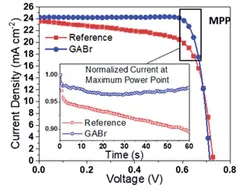 The performance of all solar cells is dictated by charge recombination. A closer to ideal recombination dynamics results in improved performances, with fill factors approaching the limits based on Shockley-Queisser analysis. It is well known that for emerging solar materials such as perovskites, there are several challenges that need to be overcome to achieve high fill factors, particularly for large area lead-tin mixed perovskite solar cells. Here we demonstrate a strategy towards achieving fill factors above 80% through post-treatment of a lead-tin mixed perovskite absorber with guanidinium bromide for devices with an active area of 0.43 cm2. This bromide post-treatment results in a more favourable band alignment at the anode and cathode interfaces, enabling better bipolar extraction. The resulting devices demonstrate an exceptional fill factor of 83%, approaching the Shockley–Queisser limit, resulting in a power conversion efficiency of 14.4% for large area devices.
The performance of all solar cells is dictated by charge recombination. A closer to ideal recombination dynamics results in improved performances, with fill factors approaching the limits based on Shockley-Queisser analysis. It is well known that for emerging solar materials such as perovskites, there are several challenges that need to be overcome to achieve high fill factors, particularly for large area lead-tin mixed perovskite solar cells. Here we demonstrate a strategy towards achieving fill factors above 80% through post-treatment of a lead-tin mixed perovskite absorber with guanidinium bromide for devices with an active area of 0.43 cm2. This bromide post-treatment results in a more favourable band alignment at the anode and cathode interfaces, enabling better bipolar extraction. The resulting devices demonstrate an exceptional fill factor of 83%, approaching the Shockley–Queisser limit, resulting in a power conversion efficiency of 14.4% for large area devices.
A Robust Protocol for In Vivo THz Skin Measurements
H. Lindley-Hatcher, A. I Hernandez-Serrano, Q. Sun, J. Wang, J. Cebrian, L. Blasco, E. Pickwell-MacPherson
J Infrared Milli Terahz Waves 40 980 (August 2019) [ pdf ] [ ref ]
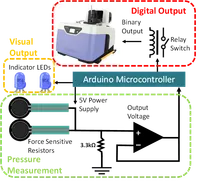 This work presents an experimental setup to control the way in which pressure interferes with the repeatability of in vivo THz skin measurements. By integrating a pressure sensor circuit into our THz system, it is possible to identify which measurements were taken within a previously specified pressure range. The live response of the pressure sensor helps to acquire data within the desired pressure leading to greater consistency of data between measurements. Additionally, a protocol is proposed to help achieve repeatable results and to remove the effects of the natural variation of the skin through the course of the day. This technique has been shown to be able to quantify the changes induced in the skin following the application of a moisturising skin product and shows the measured result to be significantly different from natural skin variation. This research therefore prepares the way for further studies on the effectiveness of different skin products using in vivo THz measurements.
This work presents an experimental setup to control the way in which pressure interferes with the repeatability of in vivo THz skin measurements. By integrating a pressure sensor circuit into our THz system, it is possible to identify which measurements were taken within a previously specified pressure range. The live response of the pressure sensor helps to acquire data within the desired pressure leading to greater consistency of data between measurements. Additionally, a protocol is proposed to help achieve repeatable results and to remove the effects of the natural variation of the skin through the course of the day. This technique has been shown to be able to quantify the changes induced in the skin following the application of a moisturising skin product and shows the measured result to be significantly different from natural skin variation. This research therefore prepares the way for further studies on the effectiveness of different skin products using in vivo THz measurements.
Ionic liquid gated carbon nanotube saturable absorber for switchable pulse generation
Y. Gladush, A. Mkrtchyan, D. Kopylova, A. Ivanenko, B. Nyushkov, S. Kobtsev, A. Kokhanovskiy, A. Khegai, M. Melkumov, M.G. Burdanova, M. Staniforth, J. Lloyd-Hughes and A.G. Nasibulin
Nano Letters 19 5836 (Aug 2019) [ pdf ] [ ref ]
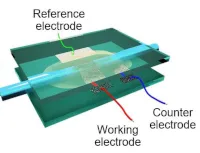 Materials with electrically tunable optical properties offer a wide range of opportunities for photonic applications. The optical properties of the single-walled carbon nanotubes (SWCNTs) can be significantly altered in the near infrared region by means of electrochemical doping. The states’ filling, which is responsible for the optical absorption suppression under doping, also alters the nonlinear optical response of the material. Here, for the first time, we report that the electrochemical doping can tailor the nonlinear optical absorption of SWCNT films and demonstrate its application to control pulsed fiber laser generation. With a pump-probe technique we show that under an applied voltage below 2 V the photo-bleaching of the material can be gradually reduced and even turned to photo-induced absorption. Furthermore, we integrated a carbon nanotube electrochemical cell on a side-polished fiber to tune the absorption saturation and implemented it into the fully polarization-maintaining fiber laser. We show that the pulse generation regime can be reversibly switched between femtosecond mode locking and microsecond Q-switching using different gate voltages. This approach paves the road towards carbon nanotube optical devices with tunable nonlinearity.
Materials with electrically tunable optical properties offer a wide range of opportunities for photonic applications. The optical properties of the single-walled carbon nanotubes (SWCNTs) can be significantly altered in the near infrared region by means of electrochemical doping. The states’ filling, which is responsible for the optical absorption suppression under doping, also alters the nonlinear optical response of the material. Here, for the first time, we report that the electrochemical doping can tailor the nonlinear optical absorption of SWCNT films and demonstrate its application to control pulsed fiber laser generation. With a pump-probe technique we show that under an applied voltage below 2 V the photo-bleaching of the material can be gradually reduced and even turned to photo-induced absorption. Furthermore, we integrated a carbon nanotube electrochemical cell on a side-polished fiber to tune the absorption saturation and implemented it into the fully polarization-maintaining fiber laser. We show that the pulse generation regime can be reversibly switched between femtosecond mode locking and microsecond Q-switching using different gate voltages. This approach paves the road towards carbon nanotube optical devices with tunable nonlinearity.

